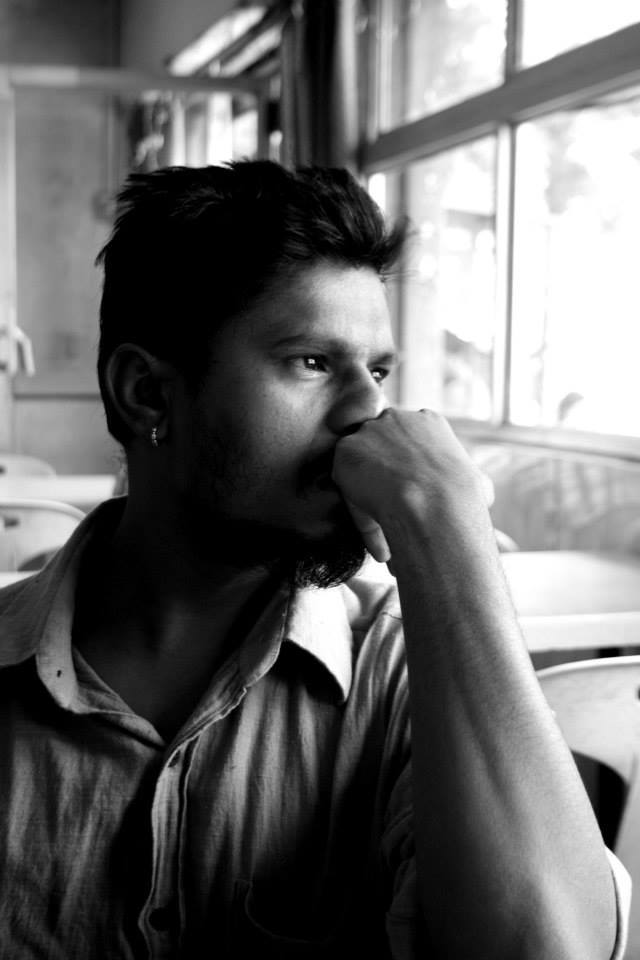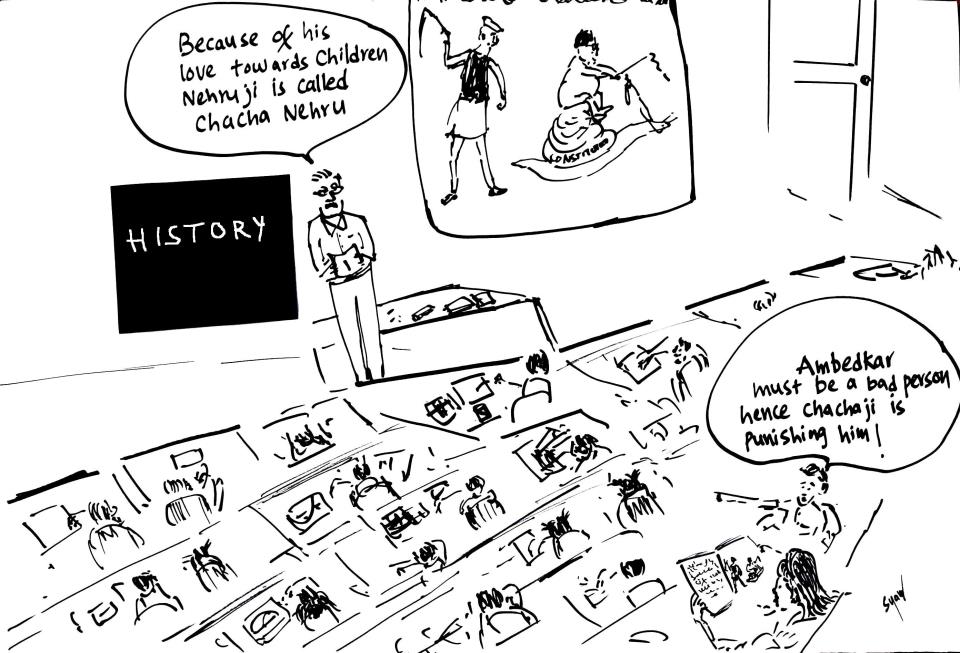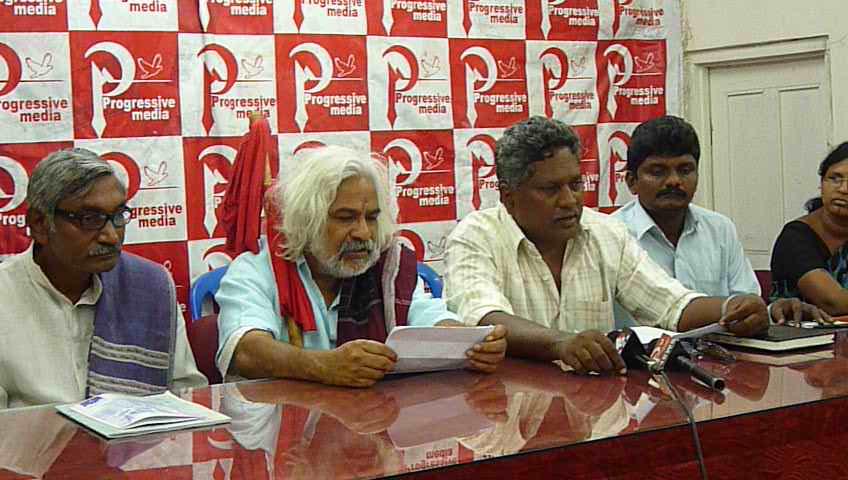Yogesh Maitreya
 It isn’t an accident that the inventors and propagators of the concept of Hindutva, which later helped shape the consciousness or discourse of Hindu Nationalism, were all Brahmins. All hailed from the state of Maharashtra: V.D. Savarkar, Hedgewar, and M.S. Golwalkar.
It isn’t an accident that the inventors and propagators of the concept of Hindutva, which later helped shape the consciousness or discourse of Hindu Nationalism, were all Brahmins. All hailed from the state of Maharashtra: V.D. Savarkar, Hedgewar, and M.S. Golwalkar.
Golwalkar was born in a brahmin family in Nagpur, Maharashtra, and in his early life he was infatuated with monastic life. He had anxiously tried hard to construct the notion of Hindutva, nation and nationality in his book ‘We or our nationhood defined’. But to the logical minds, his narratives appeared only as obnoxiously castiest/brahminical propaganda, especially when it was studied in the comparative framework offered by the Indian constitution.
But, is the concept of Hindu nationalism a creation of only these few brahmins who were proponents or forerunners of RSS and its Parivar? The answer to this is a strong ‘no’. Even the so-called national movement under the Congress was formed and led by brahmins. These brahmins later expanded into many different outfits – Vishwa Hindu Parishad (VHP) is one such outfit – both political and cultural, to create the subterfuge that they belong to different ideologies, or let’s say parties. However, it was the beginning of the process of creating political, social and cultural confusion among dalit/bahujans and, impair their political/social/cultural/economic future.
Here I emphasise that the originators of Hindu Nationalism were not a party or any organisation. The central force which created and diffused Hindu Nationalism among the masses was the agency of brahmins. Brahminism was at work, hence, it can be arguably said that Hindu Nationalism isn’t the ideological creation of or for the nation; it is but the restructuring of the brahmin hegemony by establishing new vocabulary to mislead the dalit/bahujans in the country and, seek their participation in this erroneous discourse, which is primarily constituted upon seconding others who pay allegiance to religious faiths other than Hinduism.
The shifting of focus from the coloniser-oppressor to the Muslim as the threatening other, indicated the emergence of brahminical fascism as, ‘Golwalkar, like Savarkar, was not willing to include Muslims and Christians as part of the Indian nation which according to them was an exclusive Hindu rashtra or nation’. (Islam, 2006) What is important to note here about Golwalkar talking about ‘Hindu rashtra’ is that being a brahmin, he was reinventing the hegemonic space for brahmins under the new idea of Hindu rashtra. The idea of Hinduism or the very foundation of Hindu religion is based on caste structure, purity and impurity, superiority and inferiority, and brahmins being the reference point for all discourses. Thus the explicit formulation of a Hindu rashtra, I argue, was a tactic to prohibit the growing Dalit movement and to sabotage it because of its articulation against caste, the scientific arguments deployed by dalits and their protests had attained visible prominence. With the remarkable entry of Dr. B. R. Ambedkar into the social and political domain, conservative brahmins had shrunk in fear and had started to reconceptualise the trajectories to accommodate maximum possible number of Hindus (who were divided across castes) into Hindutva, so as to create a substantial following for brahmin political/social/cultural leadership.
Therefore Golwalkar, reinterpreting India in accordance with brahmin interests, said:
In Hindustan, Religion is an all-absorbing force entity. Based as it is on the unshakable foundations of a sound philosophy of life (as indeed Religion ought to be) it has become eternally woven into the life of the Race, and forms, as it were its very soul. With us every action in life, individual, social, or political is a command of Religion. We make war or peace, engage in arts and crafts, amass wealth and give it away, indeed we are born and we die-all in accord with religious injunctions. (Jaffrelot, 2007)
Golwalkar’s narratives, as analysed logically, by students of history/anthropology/sociology of India, were proved erroneous and found to be brahminical in their essence. Such narratives suggest an interpretation by a person, who sees his caste hegemony crumbling under the colonial rule and the growing Dalit movement against caste, a person who is caught in between the vedic tradition and western modernity, a person who is nostalgic about his vedic/brahminic past and eagerly wanting to re-establish it in the current world. Golwalkar wrote this, without mentioning the humiliating system of caste, its prevalent repercussions and its remedies. The forceful creation of the Hindu nation and Hindu nationhood by Golwalkar was the attempt of an assimilationist who, without giving a single glimpse to the problems of caste and to the question- how can a mass of people, divided into thousands of castes who feel no fraternity for each other be called a nation? In this regard, we find V.D.Savarkar no different. Savarkar was actually the forerunner of Golwalkar in formulating the virulent notion of ‘Hindutva’.
V.D.Savarkar, born in a Maharashtrian brahmin family, was a Brahmin fanatic from the beginning. Arrested in London, where he had taken part in the plot to assassinate Curzon Wyllie, an associate of the Secretary of State for India, he spent twenty-seven years in jail (1910-1937), first in the Andamans and then in Ratnagiri (Maharashtra). This is where he wrote Hindutva: Who is Hindu?, first published anonymously at Nagpur in 1923. This book is the real charter of Hindu nationalism, the ideology which has become equated with the term ‘Hindutva’ (Jaffrelot, 2007). The book was written with the idea of reimagining the Hindus. It was here, surprisingly, that Savarkar compared the masculinity of Hindus with Muslims, Hindus as vegetarian and Muslims as meat-eaters, brought physical features of the religious groups into the discourse to illustrate the weakness of the former and strength of the latter, suggested the former needed to be more aggressive on the basis of being Hindu. The book, in its totality, made these flawed arguments: interpreting the Hindus as a homogeneous ethnic group; assuming Sanskrit as the supreme language (the possession of brahmins only in India through ages), postulating the idea of Hindu blood as one etc. Savarkar did not take up the question of caste and how it humiliates and excludes dalits and lower castes into consideration. Why?
It was a brahminical project (all the leading propagators and beneficiaries of it were brahmins so far) to re-establish the hegemony that these fanatics assumed had become a crumbling house, by restructuring the notion of religion and defining who is Hindu, adding the concept of nation to it, and gathering the consensus for the Hindutva project. This book had reorganised its threatening others and chalked out the religious identity of the enemy of the Hindus as, ‘Savarkar wrote this book in prison, after he had come in contact with Khilafatists, whose attitude apparently convinced him-a revolutionary till then-that Muslims were the real enemies, not the British’. (Keer, 1988)
It was a sheer mistake, and an erroneous representation of the people of India to call them mere Hindus, as Savarkar did in his book. In fact, it was an attempt to falsify or conceal the very fact that the Hindus were (are) divided into thousands of castes and are nothing but a cluster of castes, each having acquired and developed its own caste identity (read Ambedkar’s ‘Annihilation of Caste’ to get a better picture of caste diversity, especially among brahmins). Savarkar said, ‘we Hindus are bound together not only by the tie of the love we bear to a common fatherland and by the common blood that courses through our veins and keeps our hearts throbbing and our affections warm, but also by the tie of the common homage we pay to our great civilization-our Hindu culture, which could not be better rendered than by the word Sanskrit suggestive as it is of that language, Sanskrit, which has been the chosen means of expression and preservation of that culture, of all that was best and worth preserving in the history of our race’. (V.D.Savarkar, 1923)
Savarkar’s narratives were the complete antithesis of Dr. Ambedkar’s interpretation who, having gone through humiliation and acquired bitter empirical knowledge of the oppression of caste and the tyranny of the practice of untouchability by caste Hindus, especially by brahmins, once proclaimed before Gandhi: Gandhiji, I have no homeland.
Ambedkar’s interpretation of the history/culture of India, and his articulation come from a very different sociological/empirical location, about which, Savarkar had no idea and was ignorant to include it in his Hindutva project, while sketching the picture of ‘who is Hindu’. As result of this, Ambedkar has been widely recognised today, across countries, especially in academic discourse, while Savarkar is an outdated discourse, except when it is necessary to know relationship between the virulence of Hindutva and violence related to it. Hence we could see, by interpreting the cultural and historical accounts of Indians with regard to their religious identity, Savarkar was not only unscientific in his approach, but full of brahminical biases when he negated the existence of various peoples (for example, the tribes in India) and their distinctive cultures. And by considering all of them as Hindus, he forcefully tried to create homogeneity among Hindus in all the aspects of their life, whereas in empirical life, we see, it is nothing but a lie and a great farce.
To explore the discourse of Hindu nationalism in India, including its genealogical moorings, is beyond the scope of this article. The primary aim of this article was to arrange a glimpse of some narratives, written by two foremost brahmins, Savarkar and Golwalkar, who were forerunners and creators of the consciousness of Hindu nationalism, the consciousness that is a complete antithesis to the constitutional framework of India, the India imagined by Dr. B. R. Ambedkar. These two brahmin writers have not only established the concepts of Hindutva and Hindu nationalism, based on a great distortion of Indian history, but have also wrongly interpreted India’s cultural, social, political, and spiritual past. One interesting fact about the discourse of Hindu nationalism in India is that it was always propagated, indeed very ferociously, by the Brahmin lobby; now among the diasporic population of Indians in US and UK as well. Why? The simple logic behind this is that Hindu nationalism had never talked about annihilating the structure of caste, the system of caste, which means the hegemony of brahmins will be intact, if tomorrow India is transformed into the Hindu rashtra.
~
Works Cited
* Islam, S. (2006). Golwalkar’s We or our nationhood defined: A crtique, Delhi.
* Jaffrelot, C. (2007). Hindu Nationalism. Permanent Black.
*Keer, D. (1988). Veer Savarkar. Bombay: Popular Prakashan.
* V.D.Savarkar. (1923). Hindutva: Who is a Hindu?
~~~
Yogesh says:
My name is Yogesh Maitreya. I am from Nagpur and have done my M.A in Criminology and Justice (2013-15) from TISS (Tata Institute of Social Sciences, Mumbai).
Cartoon by Unnamati Syama Sundar.










